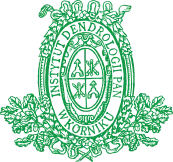Raheleh Ostadhashemi, Reza Akhavan, Roya Abedi
The impact of forest degradation on the structural heterogeneity of natural broadleaved forests in Arasbaran region of Iran
Dendrobiology 2025, vol. 94: 89-99
https://doi.org/10.12657/denbio.094.006
Abstract:
A variety of diversity indices and structural measurements have been defined to evaluate and analyze forest structure. These measures represent mathematical constructions of species, dimensional, and location diversity. The present study aimed to quantify and compare the current spatial structure of two groups of natural stands, with different levels of degradation, i.e., more degraded and less degraded stands, in the Arasbaran forests of Iran. Data were collected from 177 permanent sample plots from six forest stands in the Arasbaran forests of northwestern Iran. Spatial structure was quantified using neighborhood-based structural indices related to species mingling, size differentiation, and spatial distribution. The complex structural diversity index (SI) and the forest structure types of the stands were investigated simultaneously to compare the two different groups. Results showed that forest degradation significantly reduced structural heterogeneity. In less degraded stands, structural diversity indices including species mingling (M = 0.36), diameter at breast height differentiation (TD = 0.27), tree height differentiation (TH = 0.20) and distance to neighbors (D = 1.8) had consistently higher values compared to more degraded areas, although the spatial distribution of trees showed a clumped pattern in both groups. In addition, the higher SI value (0.394) indicated a medium level of structural diversity in less degraded stands, compared to the SI value (0.315) in more degraded stands which reflected low structural diversity. Consequently, the results revealed that, M and TD had the greatest influence on the SI values. Investigating the SI index alongside the type of forest structure can provide valuable insights for managing forests. As a priority, conservation strategies should be implemented to prevent the further degradation of forests. In addition, this information could aid in implementing silvicultural practices to enhance structural diversity and promote sustainable forest development.
Keywords: deciduous forests, permanent sample plot, SI index, spatial patterns











